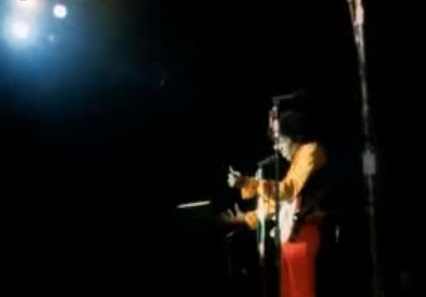
It’s no surprise what’s happened to the record business in the wake of the digital realignment of the media. Even transitional gambits such as Starbuck’s in-store sales of CDs are going the way of the record stores of yore. Apple is reportedly negotiating with the 3 other major labels to join EMI in banishing DRM, and Paul McCartney’s latest electronique collaboration with some kid named Youth will be available for free streaming before going on sale by the track.
But what may come as a surprise is how long it takes for the music biz to discover what Microsoft, Google, Amazon, and the rest of the tech biz are head over heals about: the Cloud. Look at what the software business is doing in moving from shrinkwrap to bits and you may see the path to profitability in both innovation (creativity) and customer (audience) growth.
Cloud computing is giving startups (artists) a way of extending the developmental phase of a project well beyond the typical investment requirements of even a few years ago. As the platform vendors vie for deep relationships with developers, they are open sourcing libraries, investing in free or step-up versions of tools, and launching API strategies that allow entrepreneurs to easily test, market, and establish user clouds they can leverage to bargain with VCs and bigco’s on the prowl for acquisitions.
We aren’t seeing that dynamic yet in the music scene, but that’s mostly because artists have not yet made the connection Silicon Valley has with where the money is moving. The very tentative nature of the record companies’ accommodation with the online world has put power in the hands of aggregators like Apple, Amazon, and now perhaps MySpace. This power is focused around existing artists with deep catalogs and an aging audience primed to upgrade as the music delivery vehicles are transitioned.
The tech analogy is Office, and Adobe’s Photoshop, and the enterprise backbone of messaging and CRM. Cloud versions of these properties are now beginning to hit the marketplace with force, driven by transitional leaders like Salesforce and Amazon Web Services. Microsoft’s Online Services leverage not just the channel created by Exchange, Sharepoint, and other Line of Business apps but a deep sales organization.
In effect, Microsoft is selling its Greatest Hits packages as an upgrade to the old CD versions, throwing in some outtakes and live versions to get the fans to buy the same thing one more time. But what Microsoft is doing with Azure and Mesh is seeding a raft of new artists with different takes on the old masters – micromessaging, social media, and the virtual stage of streaming realtime two-way media.
This is what the record companies will have to clone – and their task is the same as the one articulated so fervently by Steve Ballmer: Developers, developers, developers. Right now they’re talking 360 relationships, as Edgar Bronfman declared at Web 2.0 Summit was the only deal they’d do with new artists. 360 as in they take a piece of everything the artist does – touring, merchandise, the works – in return for financing the recording process.
And it will work, just as IT won’t fight Exchange servers being hosted by Microsoft in its data centers. The music business has always been about marketing and relationship reach – building careers much as Hollywood did it in the studio era by loaning out stars and pairing them with properties and directors to maximize their investment. But the emergent talent is where these companies will make money in the new context, and understanding just what that new talent looks like is up for grabs.
Is it as simple as emulating the Facebooks and Twitters of the tech world and gather eyeballs to negotiate with the majors? What kinds of “apps” will work in that model? For starters, these new artists need to create an entire ecosystem of media to flow bits across – a new analog to the networks, Clear Channel, Disney machine, and so on. If you want a hit record, you need to get it played on the hit media of the realtime streaming world? What exactly is that and does it even exist yet?
Today it doesn’t, and neither does Facebook or Twitter at any apparent scale of revenue. But take a look at the bitsway that’s emerging, a kind of dotted line that runs through the social media activity stream winding across all of the current players. A series of bi- and multi-directional bridges are popping up between the clouds, with the faint glimmering of standards to intelligently route activity streams and items according to social graph and permission metadata. It may not look like much at first glance, but these little roads will soon carry targeted traffic with much higher valued payloads than the broadcast models they are supplanting.
This new music business is a RIA version of the previous one – liner notes expanding to interactive Trackcasts about favorite artists, concerts morphing into streamcasts of special pairings of artists in virtual settings, sharing the catalogs not only of the past but the actual recording sessions of this new generation of artists. And the same power laws of the new tech dynamic will work for the new artists: invest time and keep the rights to the new delivery streams to negotiate with the labels.
None of this is news to the labels, just as Microsoft and Google and Apple have understand the fundamentals of this transition for years now. What is new is the agility with which small nodes can establish themselves. Drop by FriendFeed and you’ll see a company reminiscent of the size of Atlantic Records or Motown or any number of small startups that spawned the record business. Watch the bass player of one group (Animals) discover Hendrix in a small club and create an archive of performances that still are being mined for new gold. And the wind cries Mary.